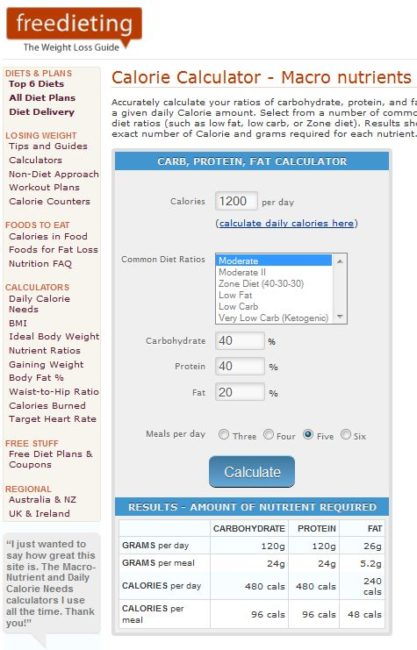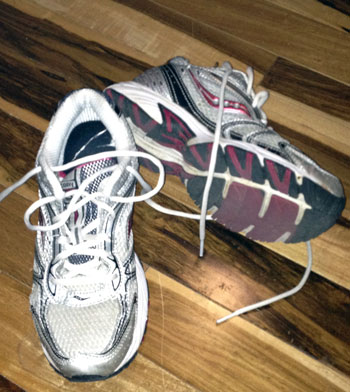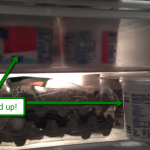Last updated on July 23rd, 2015 at 09:38 pm

There are certain things you find out by experiencing them yourself – whether it’s a big product launch dream or my decision to lose 75 pounds – no one can ever tell you exactly how things are going to turn out for you.
One of the reasons I am sharing the down and dirty details of my weight loss journey, is that most weight loss stories have the big success story twist and very little of the every day, sometimes-this-sucks, reality of the situation. The rest of my story will get into it, and it may not be pretty, but dreaming big dreams is not easy work.
In my posts last week Part 1 and Part 2 of my saga, I touched on the feedback I got when I talked about my decision to cut my calories drastically.
Cutting Calories Is Hard
Why 1200 calories? I had been tracking my food for about a month and I knew that I was already eating all over the place from a calorie standpoint. Taking in 800 one day, 1800 another, so I had absolutely no consistency.
The big number that stuck in my head was that you have to reduce or burn 3000 calories to equal 1 pound in weight loss.
I mentioned the math involved, which is always a fun (read: sarcastic) way to look at something like food, but it really gets to the point. All the sites I was finding information on confirmed that a healthy female should not eat LESS than 1200 calories a day. So that’s where I started.
I knew from my past experience way back when in early 2000’s when my husband and I finished the Body for Life challenge, that balance was key to success. That’s one of the reasons I returned to the Body for Life suggested foods as a sane reminder to focus on good nutrition and fitness. It’s not a DIET it’s a LIFESTYLE. My downfall after my own Body for Life experience was letting the exercise slack off.
This isn’t a “crash diet” to get the pounds off the fastest, I was going to melt them away by changing my food and burning it off.
Great! I have my calorie goal of 1200 per day. Now I had to fit food into that tiny number. How many carbs or protein could I have? I followed a few suggestions, and dug up some old calorie calculations in my notebook that has worked for me in the past.
Yes. You need to track your food.
Try not to smack me now. This whole section talks about how and what I took in for food and assumes one BIG thing. That you have some way to track the calories you take in. Last week I talked about the impact that both the fitbit wireless activity and sleep tracker had on my journey, and their food planing and tracking is vital to my getting here.
There are several great calorie tracking tools out there that are FREE, and here are a few that I’ve checked out or heard great things about.
fitbit.com: Obviously this is my choice with FREE online tools AND smartphone apps
CalorieCount.com – I love this site for their overall resources and they also support FREE food tracking, but honestly my favorite section is the recipe calculation feature. This is the easiest recipe calculator I have found and it has saved me from a life of boring eating. Another amazing online community for health and fitness, along with a robust smartphone app.
SparkPeople.com – this site is teeming with information on health, fitness and is also FREE! The nutrition section is a regular weekly visit for me and the recipe makeovers are an inspiration to try new things.
My suggestion is to look at how each of them allow you to log food and what data it gives you back. You will find out pretty quick which interface makes it easy to use for your lifestyle. Another bonus? If you have a smartphone, using a solution that also syncs with an app makes food choices on the road so much easier since you can track and manage most everything from your smartphone.
Break it out to 40/40/20
40% Carbs
Carbohydrates are in EVERYTHING. This is the hardest part when finding food to eat. My solution – lots of vegetables and small amounts of complex carbs. There’s the list on Body for Life with some great options here.[http://bodyforlife.com/library/food-list]
Even then, with my calorie intake, we are talking about a few ounces a day.
40% Protein
I am a carnivore, but even then, getting enough quality protein at this percentage is a challenge. Why this much? Another tip from Body for Life is support for muscle maintenance. I’ll get into the details of my training later on, but keeping muscle is key to helping you burn off the fat.
20% Fat
Again, once you start paying attention to the quantity of fat, and the impact fat calories have on your day, you’ll find it everywhere. This is another tough goal to meet with my daily intake, but leads me into how I managed to even come close to this day after day.
What’s this mean for calorie intake? Again the math kicks in. Now I did this myself, but like most solutions you can find it online – like freedieting.com that has a calculator that does all the math for you. It will provide daily and also break it down based on how many meals you plan on eating. Love this!
Here’s a screen shot of my own 40/40/20 calculations:

Weighing in… your food
I am scary-good at being able to eyeball a teaspoon of baking powder or 1/2 a cup of milk for baking. Years of precise measuring and knowing just how much that container in my kitchen holds is something my fellow baking friends and I smile about.
Eyeballing my banana bread recipe after I’ve easily made over 100 loaves in my lifetime? Sure!
Eyeballing the 3 ounces of steak I plan to eat for dinner. No way.
This is STILL the most tedious process of my food intake. My family has adjusted well, and even occasionally grabbed my food scale and put my plate on it for me. Let me make this super clear.
I weigh everything.
I weigh my breakfast, lunch, dinner, snacks, and my occasional dessert. Weight is the most accurate form of tracking. That 1/2 cup of mash potatoes might be jam-packed in there, but if we use weight, there is no way to cheat yourself… 3 ounces is 3 ounces.
It’s easier to track, easier to log, and now you know.
This scale is the newer version of the one I currently use. I really recommend you get one that has a large flat surface, not a bowl for weighing. It is so much easier to put your plate directly on the scale, zero it out, and start the weighing process. This is really easy to switch between grams, ounces, and on the rare occasion I need it, pounds.
Here’s my totally obnoxious breakdown of how I prep my food:
- put my plate on the scale
- zero it out
- put my first food on and jot down the weight
- zero it out
- repeat and get ready to eat!
So what the heck do I eat?
If you are curious about how I manage to shoot for 1200 calories, and still keep enough energy to move and work, be sure to read on in How I Lost 75 Pounds Using These Dream Products: Part 4.
~ Heather
Just getting started – continue reading the details:
How I Lost 75 Pounds Using These Dream Products: Part 1
How I Lost 75 Pounds Using These Dream Products: Part 2
How I Lost 75 Pounds Using These Dream Products: Part 3
How I Lost 75 Pounds Using These Dream Products: Part 4
How I Lost 75 Pounds Using These Dream Products: Part 5
Disclaimer – the foods, diet, and exercise described here are for informational purposes only. I am not a licensed dietician, fitness instructor or anyone who can claim this process will work for you.

Heather Montgomery is a fitness writer, triathlete, and serial entrepreneur who is devoted to sharing what she has learned about becoming a triathlete after age 40. She uses her Metabolic Training Certification to help other women struggling to get fit in mid-life. She lives and trains in Santa Rosa, California, the new home of the Ironman triathlon. You can find her biking the Sonoma County wine trails.
Note: Articles by Heather may contain affiliate links and will be compensated if you make a purchase after clicking on an affiliate link.




